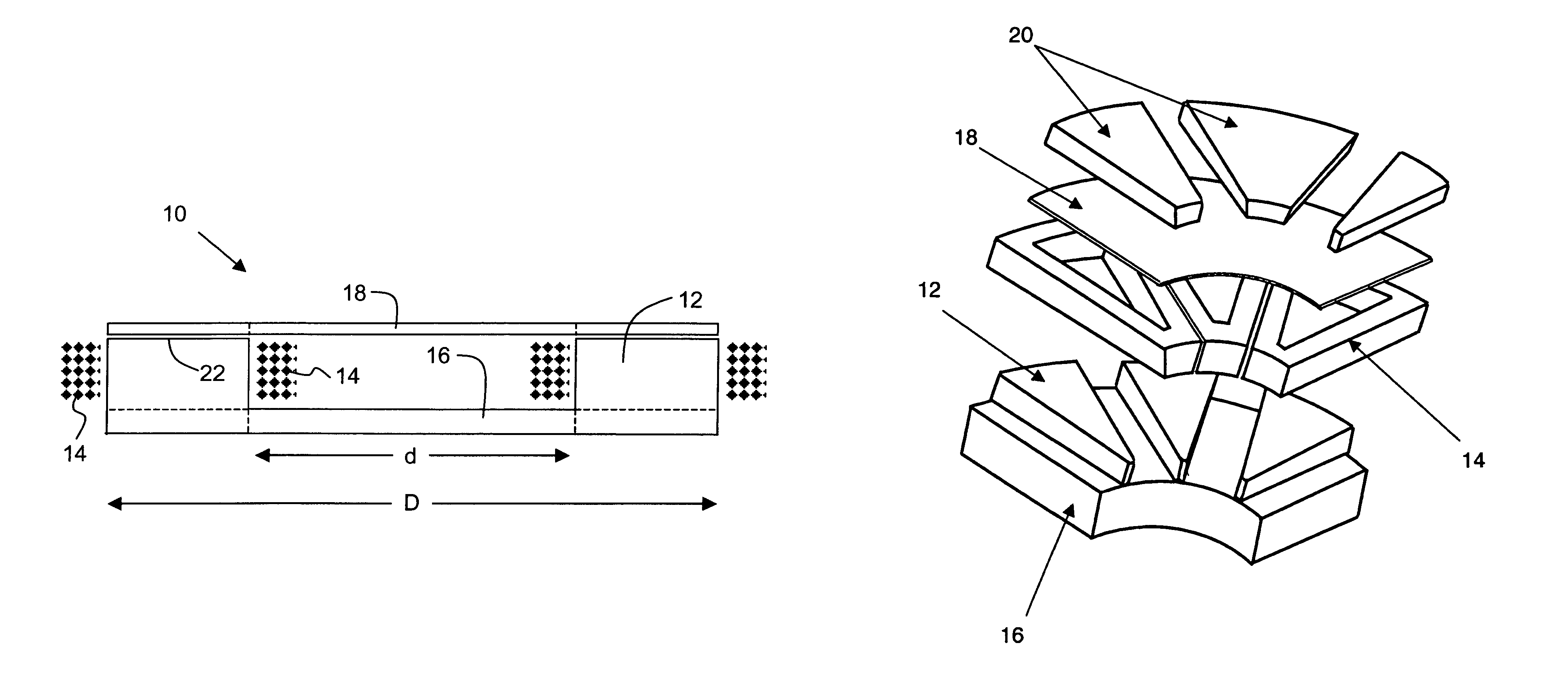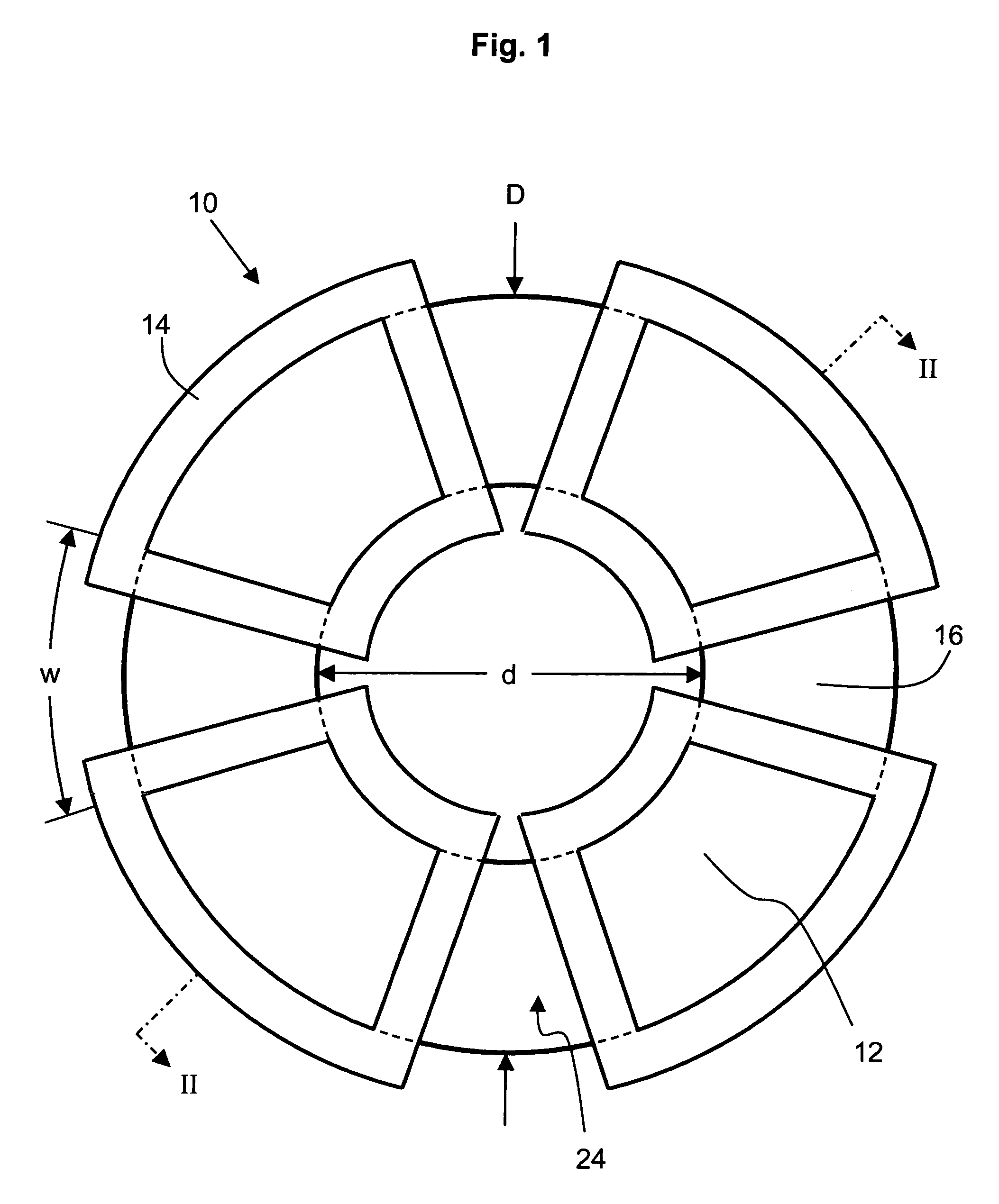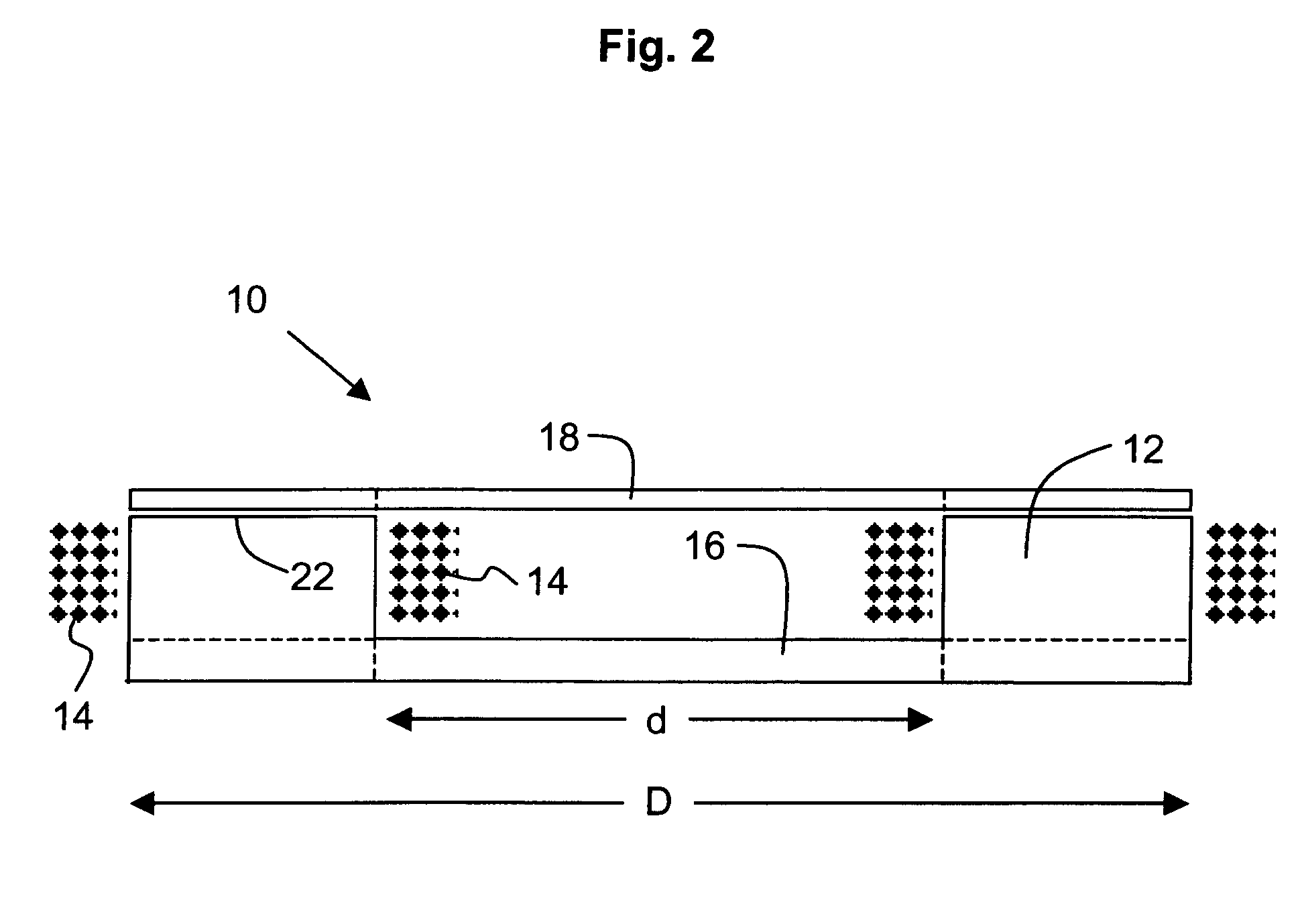Efficient axial airgap electric machine having a frontiron
a frontiron and airgap technology, applied in the direction of dynamo-electric machines, magnetic circuit rotating parts, magnetic circuit shape/form/construction, etc., can solve the problems of difficult or impossible to directly substitute ordinary steel for conventional motors, unable to meet the requirements of axial or radial airgap machines, and previous attempts to incorporate amorphous materials into conventional radial or axial airgap machines have been largely unsuccessful commercially, etc., to achiev
- Summary
- Abstract
- Description
- Claims
- Application Information
AI Technical Summary
Benefits of technology
Problems solved by technology
Method used
Image
Examples
examples
[0138]Optimized Frontiron Thickness for 15 kRPM Electric Device
[0139]An analysis of the optimized frontiron thickness is performed for a low pole count, high frequency, 15 k RPM electric device with the following specifications:
[0140]
Slots per Stator 12Poles 8RPM15000Frequency1000HzCore OD248mmAxial Length (active)89mmMagnet Axial Length20.3mmAirgap Length2.0mmOutput Power100kWSupply Voltage, line480Vrms
[0141]The machine includes one rotor and one stator and is a low pole count, high frequency, three phase electric device running as an actively rectified generator at 15 kRPM. The frontiron is constructed from METGLAS 2605SA1 amorphous metal wound as a toroid. The analysis is repeated for similar 100 kW power output electric devices with frontiron thickness ranging from 1.9 to 6.4 mm and compared with properties of a device without such a frontiron. The rotor is made of high energy product FeNdB permanent magnets housed in a carrier made of non-electrically-conductive composite, wh...
PUM
 Login to View More
Login to View More Abstract
Description
Claims
Application Information
 Login to View More
Login to View More - R&D
- Intellectual Property
- Life Sciences
- Materials
- Tech Scout
- Unparalleled Data Quality
- Higher Quality Content
- 60% Fewer Hallucinations
Browse by: Latest US Patents, China's latest patents, Technical Efficacy Thesaurus, Application Domain, Technology Topic, Popular Technical Reports.
© 2025 PatSnap. All rights reserved.Legal|Privacy policy|Modern Slavery Act Transparency Statement|Sitemap|About US| Contact US: help@patsnap.com



